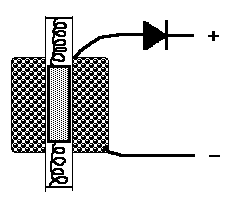Amalinda
Banned
My plan is to generate power from inside a collar of an elephant using Piezo.

I am new to Piezo harvesting. my plan is to fix a little weight at the end of Piezo and make it vibrate as elephant moves. I understand as I fix weight to the end the natural freq. of Piezo stick is brought down. But how far can I bring it down? from 60Hz to 10Hz?
here are the Piezo's I have as choices.
**broken link removed**
the ones with lower freq. are smallr in size. makes me wonder if I should get a bigger one with higher freq. and lower the natural freq. with the help of weights.
Please advice.
it will be a lot helpful.

I am new to Piezo harvesting. my plan is to fix a little weight at the end of Piezo and make it vibrate as elephant moves. I understand as I fix weight to the end the natural freq. of Piezo stick is brought down. But how far can I bring it down? from 60Hz to 10Hz?
here are the Piezo's I have as choices.
**broken link removed**
the ones with lower freq. are smallr in size. makes me wonder if I should get a bigger one with higher freq. and lower the natural freq. with the help of weights.
Please advice.
it will be a lot helpful.
Last edited by a moderator:
